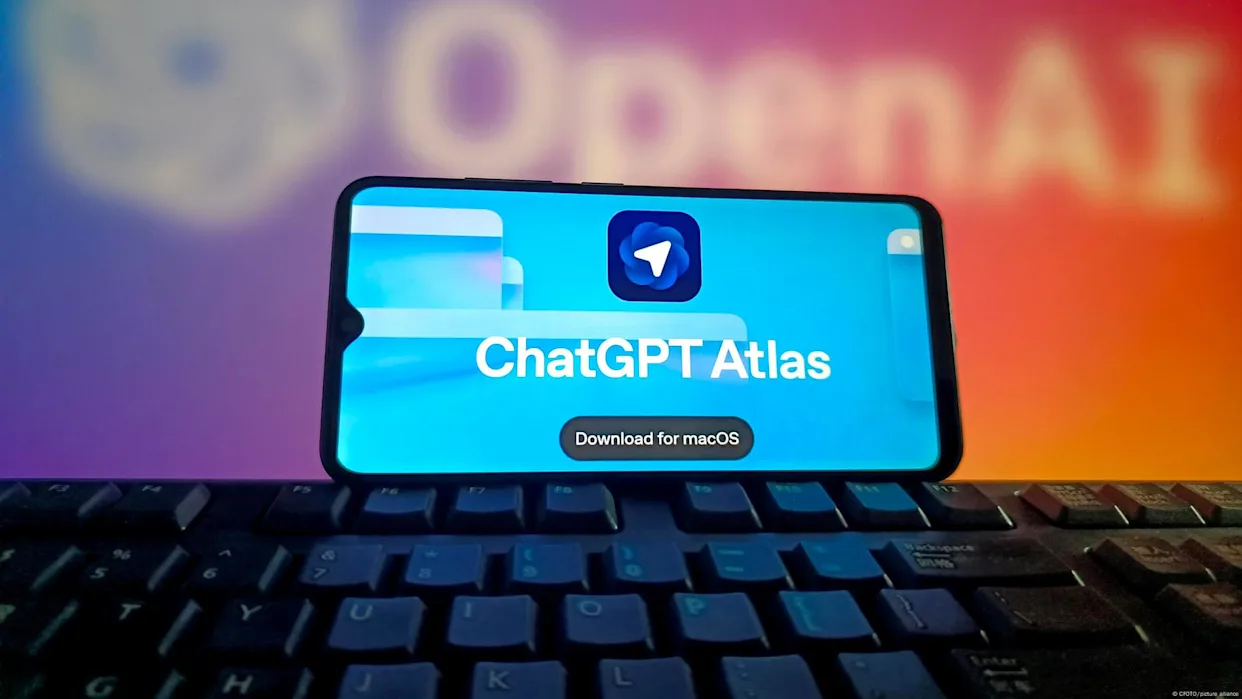A new web browser is on the scene, and it may change how you surf the internet. OpenAI has introduced ChatGPT Atlas, an AI-powered browser that blends web browsing with the power of its ChatGPT chatbot. It’s now available for macOS users, with versions for Windows, iOS and Android planned soon.
This might sound technical, but don’t worry: in this post we’ll break it down in plain, simple words so anyone can understand what’s going on and what it means for you.
What is ChatGPT Atlas?
ChatGPT Atlas is like the browser you already use, but smarter. It has tabs, bookmarks, a sidebar, and all the familiar features a browser offers. But it adds something new: it plugs ChatGPT directly into your browsing experience.
For example: when you open a page you might see a ChatGPT sidebar. You can ask questions like “Summarize this page” or “Compare these two products” without leaving the website. You can also highlight the text you’re writing (maybe an email) and ask ChatGPT to help you edit or refine it.
Another important part is “browser memory.” Atlas can remember what you’ve looked at, what topics you explore, and help you get back to old research. That memory can be turned off if you prefer.
Why It Matters
Many people use browsers every day to search, shop, watch videos, or read questions online. Atlas changes this in two key ways:
- Search becomes conversational. Instead of typing a query and choosing among links, you can ask Atlas a question and get a direct answer or summary.
- Tasks become easier. You don’t need to copy and paste text into a separate app. The AI is built in. The idea is you spend less time switching tabs and more time getting things done.
For the average person this could mean simpler web use. For example: if you’re shopping and not sure which laptop to buy, you can ask Atlas to compare models for you. If you’re writing a blog post or email, you can ask it to polish your words. If you’re researching for a project, you can ask it to pull together info from different pages you visited.
Key Features to Know
- Sidebar chat: While you browse, you can open a panel where you chat with ChatGPT without leaving the webpage.
- Tabs for results: After you ask something, you’ll get tabs for links, images, videos, or news, plus the chatbot response.
- Agent mode: Premium users can let the browser take on tasks like booking flights, gathering research, or working on your behalf.
- Import tools: If you switch to Atlas, you can bring your bookmarks, saved passwords, and browsing history from your old browser.
- Privacy options: You can control what the browser remembers, and you can delete that memory anytime. While the default does not use your browsing data to train AI models, the memory feature is optional and visible.
How to Get Started
If you’re using a Mac, you can visit the OpenAI website and download ChatGPT Atlas now. For other devices like Windows or mobile apps, wait a bit OpenAI says they are “coming soon.”
Once installed, you log in with your ChatGPT account. You can import your existing browsing data if you like. Then you’ll see the browser layout and the ChatGPT sidebar. Just explore and try asking questions or highlighting text to edit.
Does It Mean Google Chrome Is in Trouble?
Google Chrome is still the most used browser in the world. With billions of users, it remains a strong choice. But Atlas is a significant move for OpenAI and the browser world. It shows that browsing is shifting from purely searching links to interacting with web content via AI in real time.
It may not replace Chrome overnight. But Atlas marks a major shift in how we think about the browser experience. Instead of “go to Google, type a query, click links,” it’s moving towards “ask the browser, get an answer, dig deeper if you want.”
Why It’s Easy to Use
OpenAI says they kept the familiar browser design so people don’t feel lost. Tabs still work. Bookmarks still work. But now you also have a powerful helper built into the browser.
For someone who doesn’t code or spend hours online, this could still feel natural. You browse as usual. Then you can ask for help. You don’t need to learn new tools or leave your tab.
What to Watch
- Will people keep using it? Initial excitement is one thing. The real question is whether users will stick with Atlas after the novelty wears off.
- Does it work reliably? Browsers are complex. Features like agent mode and memory must work without glitches.
- How will it affect privacy and security? With more data being remembered and processed, controls and trust will matter.
- How will competitors respond? Big companies like Google and Microsoft are also adding AI into their browsers, so the competition will heat up.
The Bottom Line
OpenAI’s ChatGPT Atlas is a bold step forward in how we use the web. It brings AI directly into browsing, making tasks easier and more interactive. If you spend time searching, researching, writing, or just browsing the web, Atlas may be worth a look.
For those who want a smarter, helper-enabled browser experience, ChatGPT Atlas could be the next big thing. Give it a try and see if it changes how you surf the web.
Also Read: Slack Turns Slackbot Into an AI Assistant – What This Means for You

